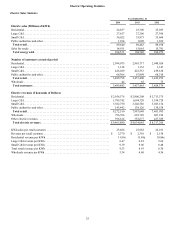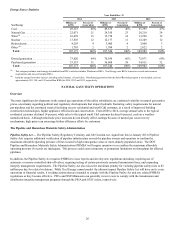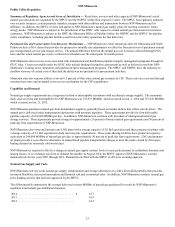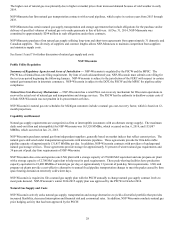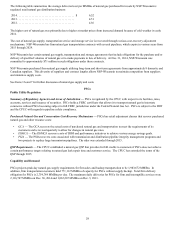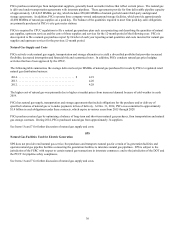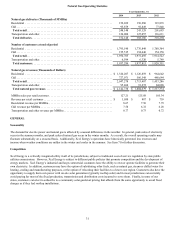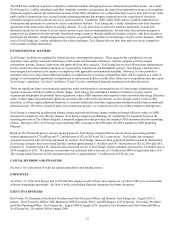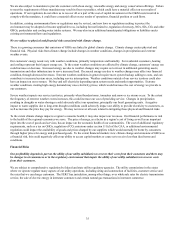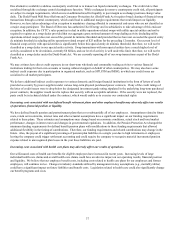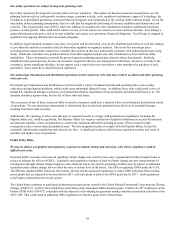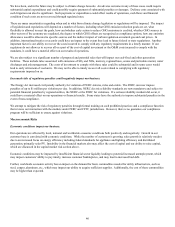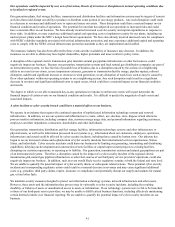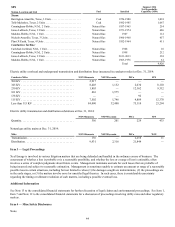Xcel Energy 2014 Annual Report Download - page 52
Download and view the complete annual report
Please find page 52 of the 2014 Xcel Energy annual report below. You can navigate through the pages in the report by either clicking on the pages listed below, or by using the keyword search tool below to find specific information within the annual report.34
Item 1A — Risk Factors
Like other companies in our industry, Xcel Energy is subject to a variety of risks, many of which are beyond our control. Important
risks that may adversely affect the business, financial condition, and results of operations are further described below. These risks
should be carefully considered together with the other information set forth in this report and in future reports that Xcel Energy files
with the SEC.
Oversight of Risk and Related Processes
A key accountability of the Board of Directors is to identify, manage and mitigate material risk. Our Board employs an effective
process for doing so, combining management and Board risk oversight. The guidelines on corporate governance and Board committee
charters define the scope of review and inquiry for the Board and its committees regarding risk management. As provided below,
management and each committee has responsibility for overseeing aspects of risk management and mitigation of the risk.
Management identifies and analyzes risks to determine materiality and other attributes such as timing, probability and controllability,
broadly considering our business, the utility industry, the domestic and global economy and the environment. Identification and
analysis occurs formally through a key risk assessment process conducted by senior management, the financial disclosure process, the
hazard risk management process and internal auditing and compliance with financial and operational controls. Management also
identifies and analyzes risk through its business planning process and development of goals and key performance indicators, which
include risk identification to determine barriers to implementing Xcel Energy’s strategy. At the same time, the business planning
process identifies areas in which there is a potential for a business area to take inappropriate risk to meet goals and determines how to
prevent inappropriate risk-taking.
At a threshold level, Xcel Energy has developed a robust compliance program and promotes a culture of compliance, including tone at
the top, which mitigates risk. The process for risk mitigation includes adherence to our code of conduct and other compliance
policies, operation of formal risk management structures and groups, and overall business management to mitigate the risks inherent in
the implementation strategy. Building on this culture of compliance, Xcel Energy manages and further mitigates risks through
operation of formal risk management structures and groups, including management councils, risk committees and the services of
internal corporate areas such as internal audit, the corporate controller and legal services.
Management communicates regularly with the Board and key stakeholders regarding risk. Senior management presents a periodic
assessment of key risks to the Board. The presentation of the key risks and the discussion provides the Board with information on the
risks management believes are material, including the earnings impact, timing, likelihood and controllability. Management also
provides information to the Board in presentations and communications over the course of the year.
The Board has assigned several important aspects of its governance and oversight to four standing committees to ensure issues and
risks are well understood and effectively managed. While the Board as a whole reviews management’s key risk assessment and
analyzes areas of potential future risk to Xcel Energy, the committees provide focused oversight of specific risks assigned to them.
This provides robust and comprehensive risk management that is critical to successful execution of corporate strategy.
Risks Associated with Our Business
Environmental Risks
We are subject to environmental laws and regulations, with which compliance could be difficult and costly.
We are subject to environmental laws and regulations that affect many aspects of our past, present and future operations, including air
emissions, water quality, wastewater discharges and the generation, transport and disposal of solid wastes and hazardous substances.
These laws and regulations require us to obtain and comply with a wide variety of environmental requirements including those for
protected natural and cultural resources (such as wetlands, endangered species and other protected wildlife, and archaeological and
historical resources), licenses, permits, inspections and other approvals. Environmental laws and regulations can also require us to
restrict or limit the output of certain facilities or the use of certain fuels, install pollution control equipment at our facilities, clean up
spills and other contamination and correct environmental hazards. Environmental regulations may also lead to shutdown of existing
facilities, either due to the difficulty in assuring compliance or that the costs of compliance no longer makes operation of the units
economic. Both public officials and private individuals may seek to enforce the applicable environmental laws and regulations against
us. We may be required to pay all or a portion of the cost to remediate (i.e., cleanup) sites where our past activities, or the activities of
certain other parties, caused environmental contamination. At Dec. 31, 2014, these sites included:
• Sites of former MGPs operated by our subsidiaries, predecessors, or other entities; and
• Third party sites, such as landfills, for which we are alleged to be a PRP that sent hazardous materials and wastes.



